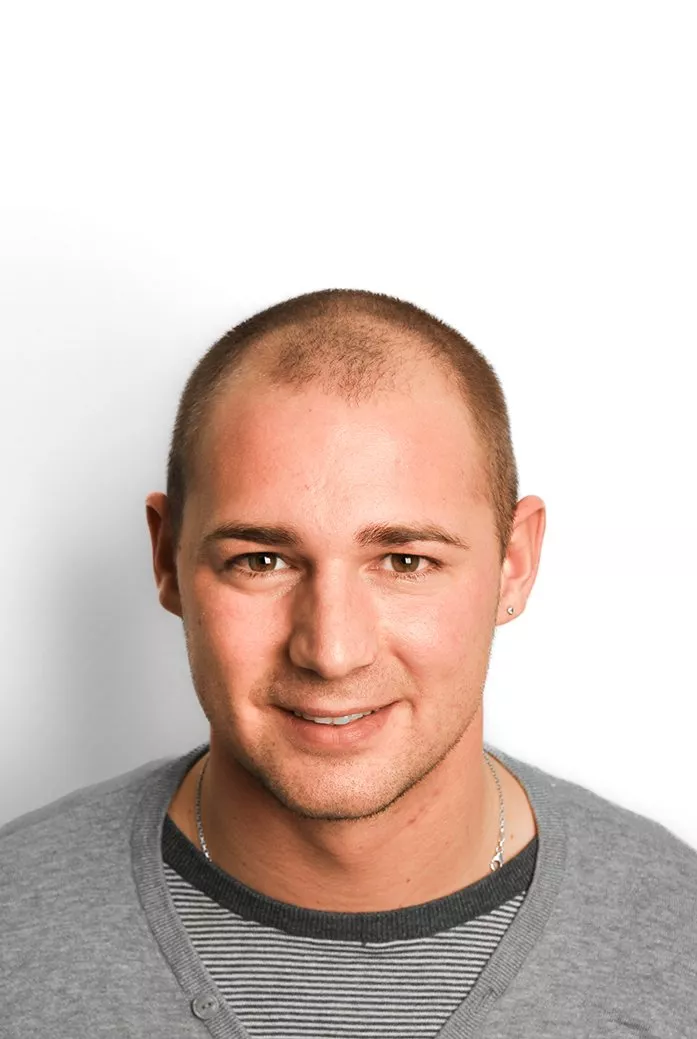Biology and psychology in hair transplantation
Am I suitable for a hair transplant?
Not everyone considering this innovative hair reconstruction is necessarily a suitable candidate. Therefore, suitability for such a procedure must be carefully assessed beforehand in terms of personal, biological, and psychological characteristics during the consultation.
Personal Characteristics
The procedure, which can span several days, requires a good personal relationship between the practitioner and the client, with mutual trust and honesty being of central importance. The personal relationship between both parties is a factor not to be underestimated.
The length and demand for a successful and efficient hair treatment require open and targeted communication and collaboration. Thus, the motivation to achieve a very natural and optimal result must come not only from the practitioner but also from the client themselves.


Biological Characteristics
Biological characteristics generally encompass the following aspects:
- the current stage of hair loss
- the area to be treated
- the texture of the hair and scalp
- the donor reserves
- any existing comorbidities
- the general feasibility of performing a scalp treatment
The determination of psychological characteristics is achieved by assessing candidates between two opposite examples:
Example Candidate I
The client feels no distress, is actively engaged in life, is content with themselves, has realistic expectations about a hair transplant and the expected outcome. This example candidate sees hair transplantation as an additional option to significantly enhance and optimize their personal appearance in line with realistic expectations.
Example Candidate II
The client experiences significant distress, which in the worst case may not solely be attributed to their hair status but to deeper underlying issues. This type of candidate typically harbors unrealistic and overly high expectations of the outcome, believing that other issues can also be resolved through hair reconstruction.
Notes and Objectives
Important: Hair reconstructions are not intended to solve fundamental issues with self-esteem. Professional help should be sought elsewhere for such matters.
The goal of hair reconstruction is to create the most realistic illusion of density, combined with a natural angle of hair fall, which is nearly imperceptible to the naked eye. Hair can only be redistributed on the head using current technology, so achieving 100% density across the entire scalp is not within the realm of possibility.

Planning with foresight
Hair loss is a process that is not always predictable in its future course. We recommend gathering information about the hair situation of other male family members beforehand. These useful insights help in developing an appropriate treatment strategy to achieve the goal of an optimal outcome.
However, this always depends on the individual factors of the candidates. Our clients should realistically consider these circumstances. With our professional assessment based on years of experience, we are happy to assist you. Other influences on hair status include potential illnesses, environmental factors, and other risk factors.
It should also be considered that a single treatment cycle may not achieve the desired goal of nearly complete hair reconstruction. Depending on the course, further interventions may be necessary. Before undergoing a hair transplant, candidates should seek several professional consultations, educate themselves about the risks, and address any open questions. Furthermore, interested individuals should take the time to consider whether there is a genuine need for intervention. As a professional institute, we consider it essential that our clients pursue intervention fully and especially out of their own conviction.
The image shows a repair client before his first procedure at rehaar®. He will receive a total of 5 treatments.
Treatment Alternatives
Generally, hair transplantation should not be the first resort in combating hair loss. Whether treatment is inevitable must be answered with reasonable arguments. The use of reversible, preventative, and stabilizing medications should typically be the first step in treatment. Additionally, there is the option to improve hair structure through dietary supplements.
Inquire Now.
Interested in hair reconstruction? Contact us via the form below, and we’ll find a solution together.




